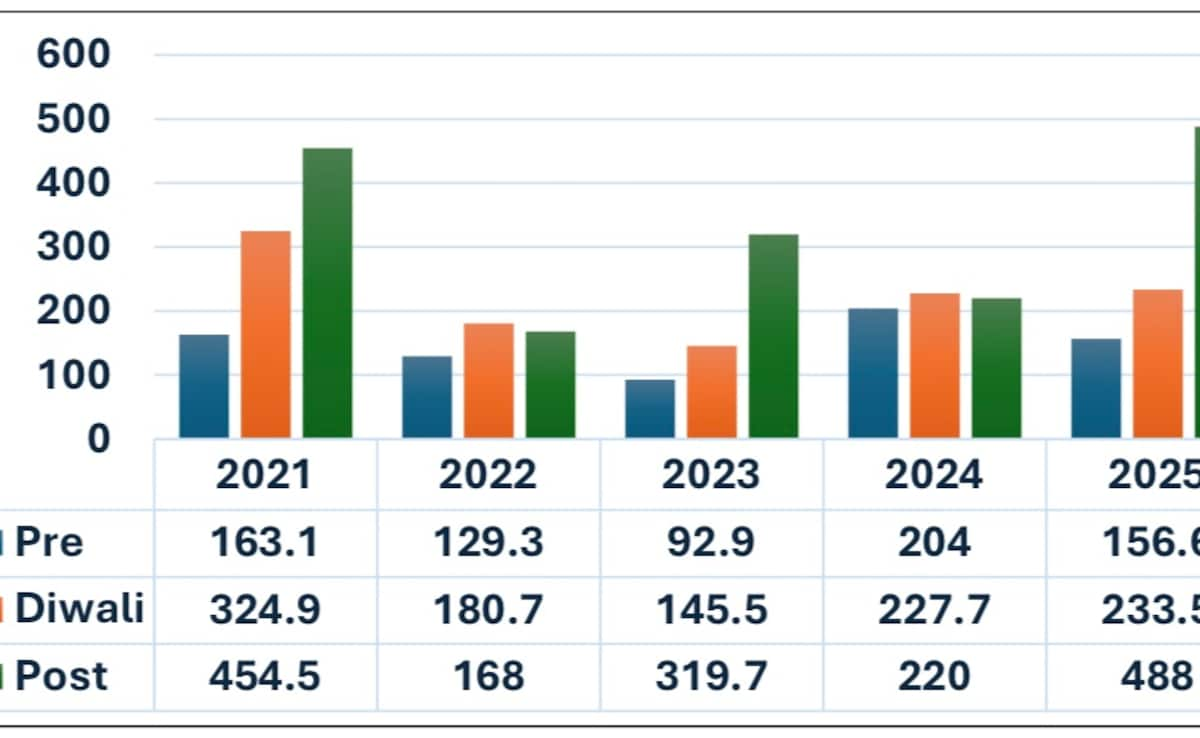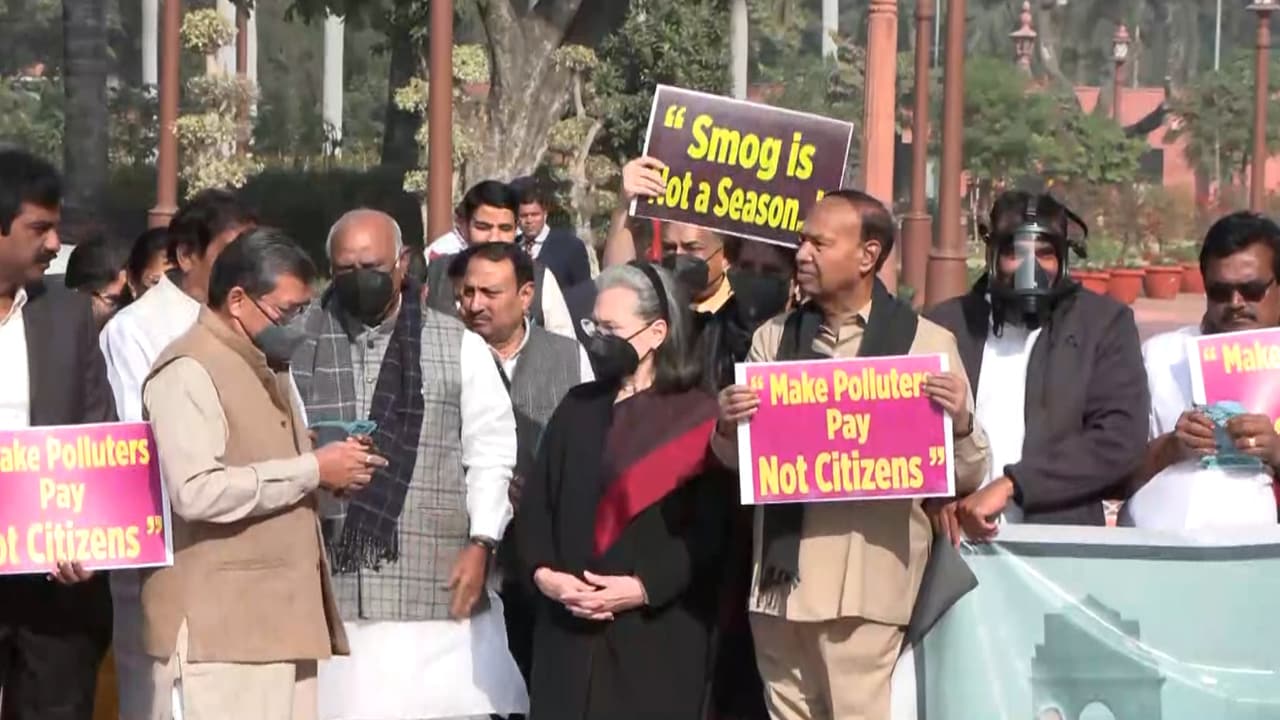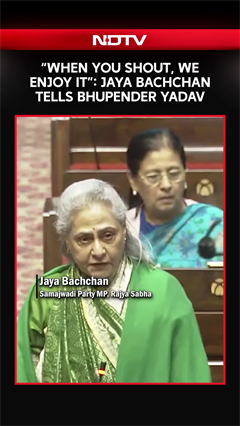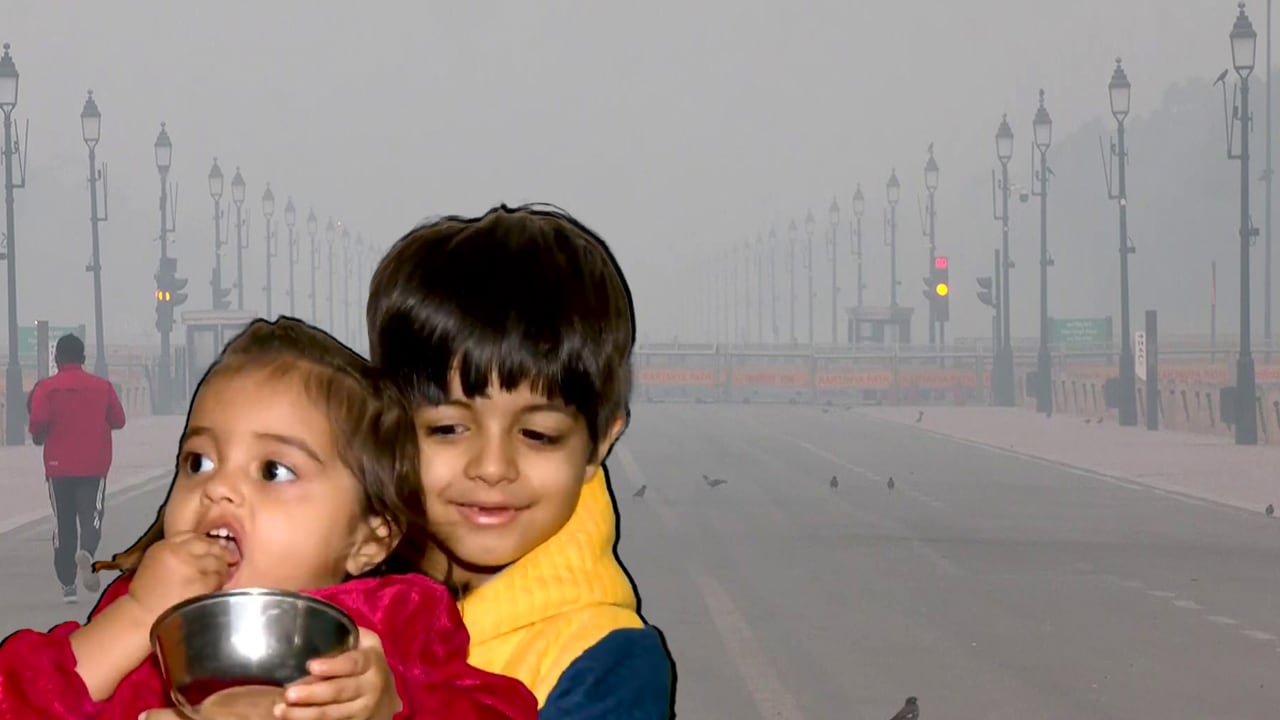- Home/
- 'Only 9 Delhi AQI Posts Worked On Diwali': Top Court Told Of 'Missing Data'
'Only 9 Delhi AQI Posts Worked On Diwali': Top Court Told Of 'Missing Data'

Only nine of Delhi's 37 air quality monitoring stations were functioning on Diwali – when the city was smothered by a toxic smog of chemicals from 'green' firecrackers, dust and vehicular pollution, and hazardous particulate matter from farm fires – the Supreme Court was told Monday, in another round of the now-annual bickering over air pollution in the city.
The court's amicus curiae, Aparjita Singh, demanded to know how the Commission for Air Quality Management, a statutory body tasked with improving Delhi's AQI, could fulfil its mandate without critical data on air pollution levels in various parts of the city.
"We don't even know when to implement GRAP (Graded Response Action Plan). That is the severe situation," Singh said, "… let them (i.e., the CAQM) answer this question – 'what is the situation of monitoring stations?' Because on Diwali, out of 37, only nine were working."
"Why is the CAQM shrinking from filing a report?"
In response, the bench led by outgoing Chief Justice BR Gavai directed the CAQM and CPCB, the Central Pollution Control Board, to submit a detailed report on its battle to improve AQI.
Research by NDTV on October 21, a day after Diwali, showed AQI dropped to a five-year post-Diwali low despite a 77.5 per cent drop in farm fires - normally a key reason for air pollution.
READ | 'Green' Crackers Failed. Delhi Suffers Worst Post-Diwali Air In 5 Years
Average PM2.5 levels reached shocking averages of 488 micrograms per cubic metre - nearly 100 times the exposure limit advised by the World Health Organization - and, perhaps worse, represented a catastrophic 212 per cent increase from pre-Diwali levels.
Air pollution levels, in fact, reached a three-year high.
This after the Supreme Court permitted bursting of 'green' firecrackers within specified hours.
READ | "Since Crackers Smuggled In...": Why Supreme Court Gave Big Go-Ahead
However, both orders, it seemed, looking at the deadly grey blanket over the city on the morning after Diwali, were ignored, with the familiar acrid smell of chemicals lingering in the air.

Air quality readings pre-, on, and post-Diwali for 2021-2025. Data: CPCB
Today's exchange in the top court came as Delhi continues to gasp for breath and air pollution levels soar to alarming levels, again. The AQI, or air quality index, in most parts of the city today was well above the danger mark; it was 335 in RK Puram, 350 in Sonia Vihar, 352 in Rohini, and 377 in Wazirpur. In others, including Siri Fort in the posh South Delhi area, it was over 330.
CPCB data showed PM2.5 concentrations at 189.6 micrograms per cubic metre and PM10 at 316 – both well above safe limits. These particles, invisible to the eye, silently invade the lungs and bloodstream, posing often fatal health risks, especially to children and elderly people.
The overall air quality in the city – one of the worst polluted in the world - remains in the 'very poor' category at 316. This was a marginal relief from the 366 measured Sunday, when data from three (of the functioning) AQI monitors showed readouts of 400+, or in the 'severe' category.
NDTV is now available on WhatsApp channels. Click on the link to get all the latest updates from NDTV on your chat.
Latest Stories
- Edited by Srishti Singh Sisodia | Sunday December 07, 2025
These cities serve as examples of how natural surroundings and effective pollution control can contribute to cleaner air.
- Press Trust of India | Sunday December 07, 2025
Ghaziabad was the most polluted city in India in November, with a monthly average PM2.5 concentration of 224 microgram per cubic metre and air quality remaining above the national standards on all 30 days, according to a new analysis.
- Reported by Ishika Verma | Saturday December 06, 2025
New Delhi: Two days after Chief Minister Rekha Gupta held a high-level review meeting, the Delhi government on Saturday formally notified the constitution of a new Expert Group on Air Pollution Mitigation and a High-Level Implementation Committee.
- Saturday December 06, 2025 , New Delhi
Delhi Chief Minister Rekha Gupta on Thursday claimed that the capital had "celebrated Diwali and maintained air quality."
- Reported by Ankita Tiwari | Friday December 05, 2025 , New Delhi
Every winter, Delhi's air turns toxic, and this year is no exception. After the monsoon, pollution levels rise, but the real crisis begins when temperatures plunge.
................................ Advertisement ................................
Latest Videos
Opinion
Blog | Well Done, Delhi. You've Turned Lung Sacrifice Into A Badge Of HonourSaikat Kumar Bose
Monday November 10, 2025Till some years back, Delhiites would ask angry questions to those in power about the capitals annual tryst with toxic air. This has changed. Those in the driving seat dont see the need to answer now.
Opinion | Why Indians Have Just Given Up On Air Pollution CrisisTanushree Ganguly
Friday December 20, 2024While some may argue that people in Delhi are now more aware of air pollution than they were a decade back, my rebuttal would be that awareness does not mean that people are concerned.
Opinion | You Must Outrage Over Filthy Air More Than Once A YearJyoti Pande Lavakare
Tuesday December 10, 2024Delhi welcomed us with monsoon rains and mangos. We were home. Fast forward a couple of years, in the winter of 2012, I found myself in denial about something other parents, mostly expats, were calling toxic air.
Opinion | Delhi's Air Pollution Situation Is Like A Bad MarriageNishtha Gautam
Friday November 22, 2024On a good day, such as today, the AQI reading in Delhi is 407. We are jubilant at the sickly sunshine trickling through the slightly dissipated smog. At least its not 1600.
दिवाली... पराली... सियासी जुगाली!Ashwini kumar
Monday November 18, 2024दिल्ली-एनसीआर में प्रदूषण का समाधान तो आज तक मिला नहीं. हर साल चिंतित होकर हम-आप सांसों की तकलीफ के साथ-साथ दिल और ब्लड प्रेशर के मरीज भी क्यों बनें?


















